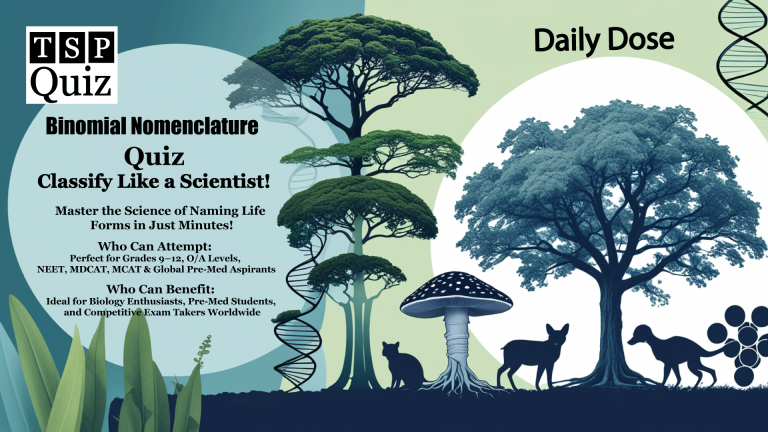Domains of Life Quiz
Test your knowledge of life’s diversity—click below to start the Domains of Life Quiz now! For more amazing and informative quizzes, click the link to explore all our Biology Quizzes!
FAQs: Domains of Life & Biodiversity Explained
What are the three domains of life in modern classification?
The three domains of life are Bacteria, Archaea, and Eukarya. This system groups all living organisms based on differences in cell structure, genetic material, and evolutionary ancestry. It allows scientists to classify species more accurately and study biodiversity from a molecular perspective. These domains form the highest level in biological taxonomy.
Why is the three-domain system important in biology and biodiversity studies?
The system provides a global framework to categorize life. Unlike older systems, it uses molecular data—especially ribosomal RNA—to trace evolutionary lineages. Because of this, it reveals deeper relationships among organisms. It also helps biologists compare traits across distant species, supporting studies in genetics, ecology, and medicine.
How are Archaea different from Bacteria, despite both being prokaryotes?
Archaea and Bacteria both lack a nucleus, but Archaea have distinct membrane lipids and unique enzymes. Their genes also resemble those of Eukaryotes more than Bacteria. Furthermore, Archaea often thrive in harsh environments like acidic springs, deep-sea vents, and salty lakes—conditions most Bacteria cannot tolerate.
Which domain includes complex organisms like humans, fungi, and plants?
All complex, multicellular organisms—including humans, animals, plants, fungi, and protists—belong to the Eukaryadomain. These organisms have membrane-bound organelles, such as mitochondria and a defined nucleus. Eukaryotes can be unicellular or multicellular, and they form the most diverse and specialized domain in the tree of life.
Who proposed the three-domain system, and what was its impact?
In 1990, Carl Woese, an American microbiologist, introduced the three-domain system using ribosomal RNA sequencing. His work revealed that Archaea were genetically distinct from Bacteria. As a result, the new system replaced older two-kingdom or five-kingdom models and revolutionized how scientists study taxonomy and biodiversity.







